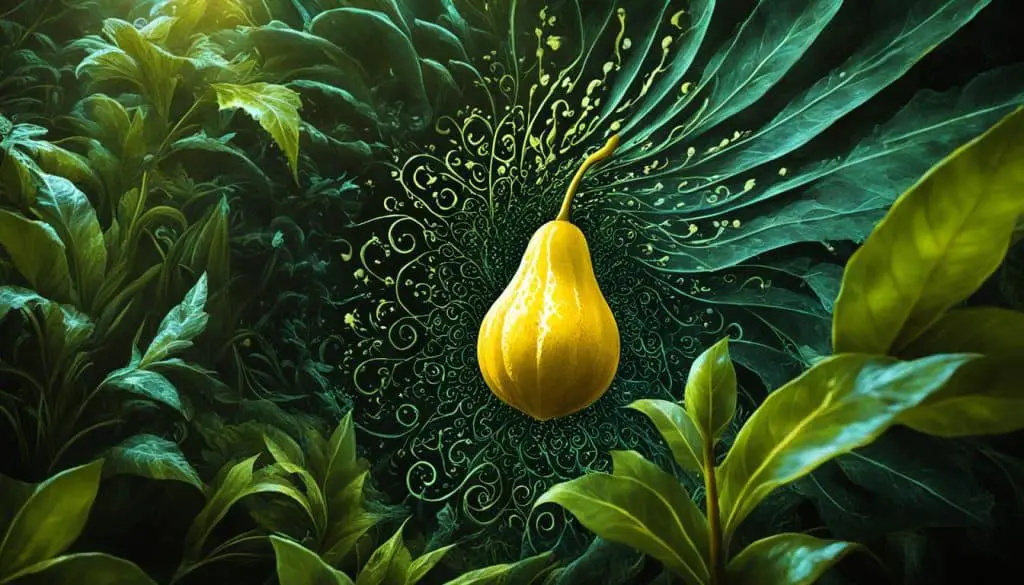Table of Contents
In the biblical story of Adam and Eve, countless mysteries and enigmas surround their tale. From the creation of Eve to the forbidden fruit and their life outside of Eden, these perplexing aspects have intrigued scholars and believers for centuries.
Are you ready to embark on a deep dive into the mysteries about Adam and Eve? Let’s unravel these intriguing enigmas together.
Make Sure You Watch The Video: I would love for you to subscribe to my YouTube channel as well… Thanks in advance!!
The Mystery of Eve’s Creation
One of the mysteries surrounding Adam and Eve is the creation of Eve from Adam’s rib, as described in Genesis 2:22. This act symbolizes a profound unity and equality between them, but it also raises questions about the deeper significance of their shared essence.
In the biblical narrative, God creates Eve from Adam’s rib, illustrating a remarkable bond between the first man and woman. This act of creation signifies their intimate connection and highlights the beauty of their relationship.
“And the Lord God caused a deep sleep to fall upon Adam, and he slept: and he took one of his ribs, and closed up the flesh instead thereof; And the rib, which the Lord God had taken from man, made he a woman, and brought her unto the man.” (Genesis 2:21-22)
While some interpret this passage as a literal account, many scholars and theologians view it metaphorically, emphasizing the profound unity and equality between Adam and Eve.
The use of Adam’s rib as a source for Eve’s creation signifies their shared essence and the complementary nature of their relationship.
This mystery invites us to contemplate the deeper symbolism and significance behind the creation of Eve from Adam’s rib. It encourages us to reflect on the idea of profound union and mutual dependence in the context of human relationships.
The Enigma of the Forbidden Fruit
One of the enduring mysteries surrounding the story of Adam and Eve revolves around the placement of the tree of knowledge in the Garden of Eden. In Genesis 2:17, God explicitly commanded Adam and Eve not to eat from the tree, yet it was still there, tempting them.
This enigmatic choice by God raises thought-provoking questions. Why would God put a tree in the garden that held the knowledge of good and evil if He didn’t want His creation to partake in it? Was it a test of their obedience or a pathway to their spiritual growth?
The forbidden fruit symbolizes the dual nature of humanity—our capacity for both good and evil. It represents the choice between following God’s guidance or succumbing to our own selfish desires.
Some interpretations suggest that the presence of the tree was a means for God to grant free will to Adam and Eve. By presenting them with the choice, He granted them autonomy and the ability to make moral decisions.
However, this mystery remains a topic of deep theological and philosophical debate. To gain a better understanding of the implications of this forbidden fruit, we must delve further into the narrative and the consequences that unfolded from Adam and Eve’s decision to eat from the tree.
The Consequences and Lessons
The repercussions of Adam and Eve’s disobedience were profound. Their act of eating from the forbidden tree brought about a rupture in their relationship with God and introduced sin into the world.
It marked the beginning of humanity’s struggle with moral choices and the consequences that follow.
By exploring the enigma of the forbidden fruit, we can gain insights into the complexities of human nature and the challenges we face in discerning between good and evil.
It serves as a cautionary tale, urging us to reflect on the repercussions of our own choices and the importance of obedience to divine guidance.
In the next section, we will unravel the enigmatic role of the serpent in tempting Eve and consider the presence of evil in a supposedly perfect paradise.

Unraveling the Serpent’s Motive
The role and motivation of the serpent in tempting Eve, as described in Genesis 3:1-5, continue to captivate scholars and believers alike. This intriguing mystery raises profound questions about the presence of evil in what was believed to be a perfect paradise.
In the biblical narrative, the serpent plays a pivotal role in the events unfolding in the Garden of Eden. Its cunning words and persuasion lead Eve to eat the forbidden fruit from the tree of knowledge, ultimately resulting in the fall of humanity.
But what drove the serpent to act in such a way?
What was its motivation behind tempting Eve?
These questions remain unanswered, leaving room for speculation and interpretation.
The presence of evil in a supposedly perfect paradise adds another layer of complexity to this enigma.
How did evil enter Eden?
Was it always present but dormant? Or did it manifest through the serpent’s actions?
Some biblical scholars suggest that the serpent symbolizes the embodiment of evil or the devil himself. Others view the serpent as a representation of humanity’s innate capacity for temptation and sin.
“And the serpent said to the woman, ‘You will not surely die. For God knows that when you eat of it your eyes will be opened, and you will be like God, knowing good and evil.'”
These verses highlight the serpent’s deceptive nature and its ability to manipulate Eve’s desires and curiosity. It presents itself as a giver of knowledge, tempting Eve with the promise of becoming like God.
Despite the ambiguity surrounding the serpent’s role and motivation, its actions serve as a catalyst for the fall of humanity, leading to a rupture in the perfect paradise originally created by God.
The Presence of Evil in Paradise
The presence of evil in a supposedly perfect paradise raises profound theological questions. How could a place created by a benevolent and all-powerful God allow evil to exist?
One perspective is that the presence of evil in Eden illustrates the concept of free will. By giving Adam and Eve the freedom to choose, God allowed the potential for evil to enter the world. The serpent’s role in tempting Eve showcases the consequences of human agency and the power of choice.
Another interpretation is that the presence of evil in paradise serves as a test of faith and obedience. The temptations faced by Adam and Eve revealed their vulnerability and highlighted the importance of trust and obedience towards God’s commandments.
Ultimately, the serpent’s motive and the presence of evil in a perfect paradise remain mysteries that provoke contemplation and provide fertile ground for theological inquiry.
As we continue our exploration of the mysteries surrounding Adam and Eve, we invite you to join us in the next section as we delve into the identity and nature of the forbidden fruit.
Decoding the Forbidden Fruit’s Nature
The exact nature and identity of the forbidden fruit, mentioned in Genesis 2:17, are shrouded in mystery. The biblical text does not disclose specific details, leading to endless speculation about its form and essence.
Scholars and theologians have offered various theories, but the forbidden fruit’s true nature remains elusive.
Some speculate that the forbidden fruit was an apple, while others propose it may have been a fig, pomegranate, or even a grape.
These theories are largely based on cultural symbolism, artistic depictions, or regional fruit symbolism. However, without any explicit scriptural evidence, these speculations are mere conjectures.
“As we unravel the mystery behind the forbidden fruit, we confront the limitations of our knowledge and the boundless capacity of human imagination.”
The enigmatic nature of the forbidden fruit invites us to explore its symbolism and significance rather than its tangible identity. It serves as a powerful metaphor for temptation and disobedience, highlighting the consequences of indulging in forbidden desires.
The exact fruit it represented may be less important than its role in illustrating a moral and theological lesson.
Interestingly, the debate surrounding the forbidden fruit’s exact nature extends beyond theological circles. Its elusive identity has infiltrated popular culture, inspiring countless literary works, artworks, and even colloquial expressions.
The forbidden fruit’s enigma continues to captivate and intrigue both religiously inclined individuals and those with a curiosity for historical mysteries.

Though the true nature of the forbidden fruit may forever remain unknown, its symbolic power persists. The mystery surrounding this elusive fruit serves as a reminder of the enduring allure of forbidden desires and the consequences that befall those who succumb to them.
Adam’s Silence and Presence
During the temptation in the Garden of Eden, the account in Genesis 3:6 highlights Adam’s intriguing response. His presence and silence raise questions about his role and his reaction to the unfolding sin.
What was Adam thinking as Eve succumbed to temptation? Did he remain silent out of fear, confusion, or something else?
“But the serpent said to the woman, ‘You will not surely die. For God knows that when you eat of it your eyes will be opened, and you will be like God, knowing good and evil.'” – Genesis 3:4-5
Adam’s silence during this critical moment is shrouded in mystery. It is unclear whether his silence stemmed from doubt, indifference, or a subconscious decision to avoid intervening. Perhaps he was caught off guard by the events unfolding before him.
The consequences of Adam’s silence resonate throughout the narrative of Adam and Eve. His passivity may have had a profound impact on the future of humanity. By remaining silent, Adam missed an opportunity to protect Eve from succumbing to temptation or to provide guidance in the face of temptation.
This mystery raises intriguing questions about Adam’s role as the first man and the head of the human race. What responsibility did he bear in the Garden of Eden? How should we interpret his silence in this context?
Footnote: I think we can read too much into the way things are written at times. I take it as Adam was with her in the garden not by her side at the time of the temptation.
Just as Abrahams’s servant was with him when he was going to sacrifice Isaac. He wasn’t literally with him for the act as he waited at the foot of the mountain but he was with him in the sense of the same place, went with him on the journey, etc.
The Implications of Adam’s Actions
Adam’s silence during the temptation can be seen as a failure to assume his leadership role and protect his partner. His lack of response to sin introduces a deeper layer of vulnerability into the story of Adam and Eve.
Was there a missed opportunity for redemption? Could Adam have intervened and halted the devastating chain of events that followed? These questions linger, reminding us of the complexities and consequences of our actions or non-actions in the face of temptation.
Adam’s silence remains a part of the enigmatic tapestry surrounding the story of Adam and Eve, leaving us with room for speculation and reflection on the nature of temptation, responsibility, and our own responses to sin.

| Adam’s Silence and Presence | Implications |
|---|---|
| Raises questions about Adam’s role and reaction | Highlights the impact of his silence on the story |
| Prompts reflection on the nature of temptation | Invokes introspection on our own responses to sin |
The Enigmatic Cherubim and Flaming Sword
The placement of cherubim and a flaming sword to guard the tree of life, as mentioned in Genesis 3:24, envelops us in mystery. These divine guardians stand as symbols of divine protection and serve to safeguard the sacred tree from the reach of humanity.
But what is the purpose behind their presence, and what do they represent in the grand narrative of Adam and Eve?
The cherubim are celestial beings often depicted with wings and associated with divine presence and protection in ancient Near Eastern cultures. In the context of the tree of life, their presence suggests the sacredness and the extraordinary nature of this tree.
The flaming sword further reinforces the idea of divine protection, serving as a sublime and imposing barrier for those who dare to approach the tree’s life-giving powers.
“These celestial guardians, with their flaming sword, stand as a testament to the divine protection and the consequences of Adam and Eve’s disobedience.”
Their enigmatic nature invites interpretation and contemplation. Are the cherubim and flaming sword mere physical manifestations, or do they represent a deeper spiritual truth?
Are they a manifestation of divine wrath or a symbol of God’s unfathomable love, guarding humanity from eternal separation from Him?
The layers of meaning behind these divine guardians unfold like a mystery waiting to be deciphered.
Let us now consider a visual representation of the enigmatic cherubim and flaming sword:

| Symbol | Meaning |
|---|---|
| Cherubim | Symbols of divine presence and protection |
| Flaming Sword | Deterrence and divine barrier |
Life Outside Eden: Adaptation to a New Existence
After their expulsion from the paradise of Eden, Adam and Eve were thrust into a new and unfamiliar existence, brimming with challenges and uncertainties. Having known nothing but the bountiful blessings of their previous home, they now had to navigate a world outside the confines of paradise, facing the harsh realities of life.
The details of their journey into this unknown land are scarce, leaving us with a sense of curiosity and wonder about how they adapted to their new circumstances.
Imagine the profound emotions that must have coursed through their veins as they walked away from the lush, vibrant gardens they once called home. The loss of the idyllic beauty and divine protection must have weighed heavily upon their hearts and minds.

They would have encountered the harshness of the elements, grappling with the challenges of scarcity, toiling for sustenance, and battling against the forces of nature.
The loss of their intimate connection with nature and the need to rely on their own efforts would have been a jarring experience for Adam and Eve.
But amidst the challenges, there is room for growth and resilience. As they ventured into uncharted territories, Adam and Eve discovered the depths of their own strength and resourcefulness.
They learned to adapt and survive in this new existence, forging a path forward despite the adversities they faced. The trials they encountered would have nurtured their resilience and molded them into individuals capable of overcoming hardships.
By embracing their new reality and learning to rely on each other, Adam and Eve would have forged a bond even stronger than before. Together, they would have faced the challenges head-on, supporting and complementing each other through the trials that came their way.
The adaptability and tenacity displayed by Adam and Eve shed light on the remarkable human capacity to persevere in the face of adversity.
Challenges of Life Outside Eden
Here are some of the challenges that Adam and Eve may have encountered as they navigated their new existence:
- The loss of divine protection and guidance
- The struggle for sustenance and the search for food
- The harsh realities of sickness, pain, and death
- The challenge of raising children in a world far different from Eden
These challenges, although daunting, provided opportunities for growth, resilience, and a deeper understanding of the human experience. Each hurdle they overcame would have shaped them, molding their character and strengthening their resolve.
As we explore the mysteries surrounding Adam and Eve’s life outside of Eden, we gain insight into the indomitable spirit of humanity and its ability to adapt and thrive amidst the most trying circumstances.
The Mark of Cain and Divine Justice
Although this section is not directly about Adam and Eve, it explores a fascinating mystery that occurred within their lineage.
After Cain’s murder of Abel, God placed a mark on Cain for his protection, as mentioned in Genesis 4:15. This mark of Cain adds an intriguing layer to our understanding of divine justice and the nature of protection.
The mark of Cain raises several questions. What did the mark symbolize? How did it offer Cain protection? And what was the significance of divine justice in response to Cain’s actions?
Examining the mark of Cain allows us to delve into the concept of divine justice and the ways in which God ensures the protection of individuals, even in the aftermath of grave sins. It offers us insights into the complexities of God’s mercy, judgment, and the balance between justice and grace.
Only Cain and God truly knew the meaning behind the mark. It signified more than just a physical distinction; it carried a weighty reminder of his crime and God’s divine justice. The mark of Cain was a mark of both protection and divine retribution—an everlasting reminder of the consequences of his actions.
By exploring the mystery of the mark of Cain, we gain a deeper understanding of the dynamics between divine justice and mercy. It encourages us to reflect on the complexities of God’s judgment and protection, even in the face of humanity’s gravest transgressions.
Divine Justice and Protection in the Mark of Cain
The mark of Cain was not simply a punishment; it also served as a form of protection. Even after committing a heinous act, Cain was not abandoned by God. The mark ensured that he would be shielded from harm, as Genesis 4:15 indicates: “The Lord put a mark on Cain, lest any who found him should attack him.”
God’s act of marking Cain raises profound theological questions. Did the mark function as a deterrent to would-be assailants? Or did it serve as a visible symbol of divine protection, warning others not to intervene in God’s justice?
This enigmatic mark challenges us to consider the intricate balance of divine justice and mercy. In marking Cain, God, in His unfathomable love, chose to preserve his life while still holding him accountable for his crime.
The mark reflects both God’s judgment and His desire to extend the opportunity for redemption to Cain, allowing him to continue his life under divine supervision.
The Mystery Unveiled
While the Bible does not provide explicit details about the physical appearance of the mark of Cain, it represents a powerful symbol within the narrative. It serves as a reminder of the consequences of sin, a mark that Cain would bear for the rest of his days.
While we cannot definitively know the form or nature of the mark, it remains a fascinating enigma that invites contemplation and interpretation.
The mark of Cain speaks to the complexities of divine justice, sin, and redemption—an enduring mystery that sheds light on the multifaceted nature of God’s dealings with humanity.

| Key Messages | Takeaways |
|---|---|
|
|
Unveiling the Meaning Behind Eve’s Name
Eve, the renowned character in the biblical story of Adam and Eve, carries a name that holds profound significance. In Genesis 3:20, she is referred to as “the mother of all living,” a title bestowed upon her even before childbirth enters the narrative.
This name reveals a deeper essence within Eve and unveils her pivotal role in humanity’s story.
By exploring the meaning behind Eve’s name, we gain insight into her identity and purpose. The name “Eve” itself comes from the Hebrew word “Chavah,” which signifies life and is derived from the root word “Chayah,” meaning “to live.”
Consequently, her name encapsulates the nurturing essence of womanhood, emphasizing her role as the source from which all future generations would spring.
Eve’s name, “the mother of all living,” carries a rich symbolism that extends beyond biological motherhood. It encompasses her role as the progenitor of humanity, embodying the responsibility of leading and nurturing future generations.
Her significance as the first woman grants her a unique place in the story of Adam and Eve and highlights her pivotal role in shaping the course of human history.
The Profound Impact of Eve’s Name
Eve’s name, with its profound meaning, resonates throughout the biblical narrative, shaping our understanding of her identity and role. It signifies her connection to the divine purpose of creation and highlights the importance of women in the perpetuation of life and the human story.
“Through Eve’s name, we glimpse the transformative power of motherhood and the influence of women as the bearers of life, wisdom, and love.”
As we delve deeper into the mysteries surrounding Eve and her story in the following sections, the significance of her name will continue to guide us, offering fresh perspectives on her contributions as a central figure in the tale of Adam and Eve.
Imagining Adam and Eve’s Pre-Fall Existence
The pre-fall existence of Adam and Eve in the lush paradise of Eden remains shrouded in mystery. While the biblical text offers limited details, we are invited to envision the idyllic life they led before succumbing to temptation.
As we explore their pre-fall existence, we can imagine the beauty and harmony that permeated their divine fellowship, interactions, thoughts, and feelings.
In this section, let us embark on a journey of imagination, delving into the mysteries of Adam and Eve’s life in Eden. Picture a perfectly balanced garden, where every element harmoniously coexisted, perpetuating a sense of divine order.
“As you close your eyes and transport your thoughts to Eden, envision the vibrant colors of blooming flowers, the gentle melodies of birdsong, and the tranquility that permeated the air. Adam and Eve walked hand in hand, immersed in the splendor of their surroundings, their hearts filled with wonder and gratitude.”
Their interactions were marked by love, respect, and an innocent curiosity about the world around them. They shared tender moments of companionship, exploring the vastness of Eden together and discovering its hidden treasures.
Their thoughts were consumed by a pure and childlike wonder, as they marveled at the boundless beauty of creation. With each step, they found themselves captivated by the intricacies of nature, marveling at the delicate fluttering of butterfly wings and the gentle rustling of leaves in the breeze.
The inexpressible joy and contentment they experienced in their divine fellowship brought them closer to God. Their hearts were attuned to the presence of the divine, and they basked in the warmth of His love and guidance.

As they wandered through the abundant garden, their emotions were intertwined with the harmony of creation. The vibrant colors of Eden mirrored the vibrancy of their souls, and they felt a deep sense of belonging and purpose in their heavenly abode.
While we can only imagine the fullness of Adam and Eve’s pre-fall existence, their story serves as a reminder of the divine design that once enveloped humanity.
It offers glimpses of a time when humans lived in perfect harmony with their surroundings, in a state of blissful innocence and unity with their Creator.
What are Some of the Mysteries Surrounding Adam and Eve?
The story of Adam and Eve holds 20 interesting facts about Adam and Eve in various cultures, sparking mysteries about their existence, the origin of sin, and the forbidden fruit. These mysteries have captivated theologians, scholars, and believers for centuries, continuing to elicit curiosity and debate around the world.
Conclusion
In conclusion, the mysteries surrounding the stories of Adam and Eve continue to captivate our imagination. From the enigma of Eve’s creation to the nature of the forbidden fruit and their life outside of Eden, each mystery offers glimpses into the complex tapestry of their story.
By exploring these mysteries, we gain a deeper understanding of the themes and lessons embedded within the narrative of Adam and Eve.






